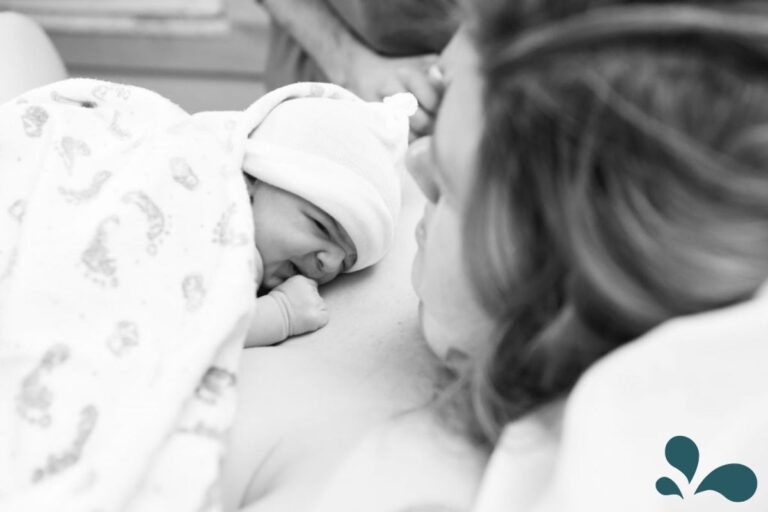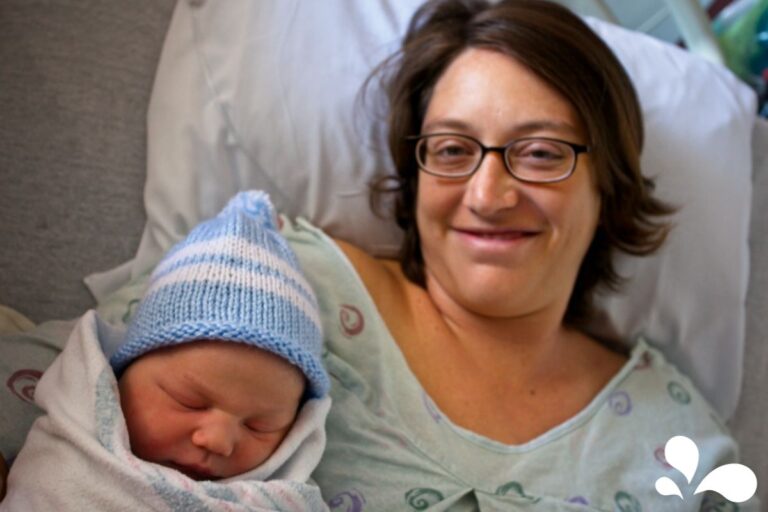If you’re preparing for a C-section and planning to breastfeed, you likely have many questions about what to expect before, during, and after the procedure. Knowing what to anticipate can help you feel more confident and at ease.
Here’s a comprehensive guide to address some of the most common questions other expectant mamas have asked about C-sections.

What should I do the night before my C-section?
The night before your scheduled C-section, it’s important to get a good night’s sleep to make sure you’re well-rested.
Follow any instructions that your healthcare provider has given you, which may include:
- Fasting: You’ll often be advised not to eat or drink anything after midnight to prepare for anesthesia.
- Medication: If you’ve been prescribed medication to take before the surgery, make sure to take it as directed.
- Showering: You may be asked to shower with a special antiseptic soap to reduce the risk of infection.
- Relaxation: Do calming activities, such as reading or listening to music, to help ease any pre-surgery anxiety.
How long is the hospital stay after a C-section?
It’s typically 2 to 4 days. But the length of your hospital stay after a C-section can vary depending on your and your baby’s health.
Here’s a standard breakdown:
- Uncomplicated C-section: Typically, a 2 to 3-day stay is common.
- Complications: If there are any complications, you might stay longer for additional monitoring and care.
What’s the minimum hospital stay after a C-section?
The minimum hospital stay after a C-section is usually around 48 hours. This allows healthcare providers to monitor your recovery and ensure there are no immediate postoperative issues.
How many hours after a C-section can I eat?
After a C-section, you should start with clear liquids and gradually move to solid foods as your body adjusts.
Here’s a general timeline:
- First few hours: Start with ice chips or sips of water.
- 6 to 8 hours: Introduce clear liquids like broth or juice.
- 24 hours: Try eating soft, bland foods and gradually return to your regular diet.
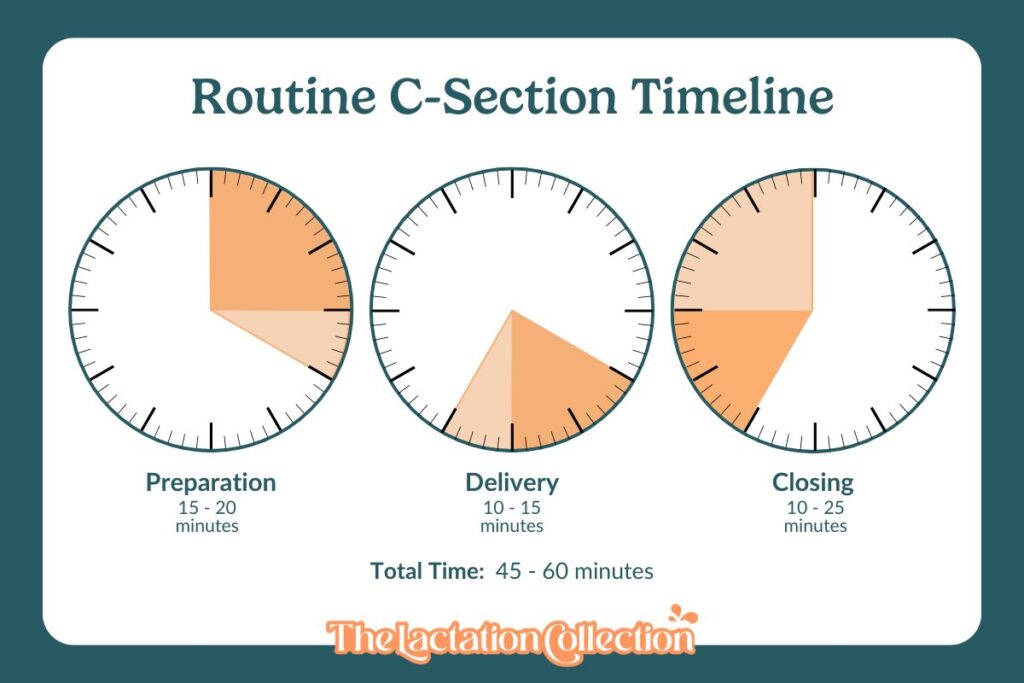
How long does a C-section take?
A C-section procedure is typically between 45 minutes to an hour.
This includes:
- Preparation time: Around 15 to 20 minutes for anesthesia and setting up.
- Delivery time: The baby is usually delivered within 10 to 15 minutes.
- Closing time: The remaining time is spent stitching up the incisions.
What should I eat after a C-section for fast recovery?
Eating a balanced diet after your C-section can promote healing and recovery.
Focus on the following:
- Protein: Lean meats, fish, eggs, and legumes to repair tissues.
- Fiber: Whole grains, fruits, and vegetables to prevent constipation.
- Hydration: Drink plenty of water to stay hydrated.
- Vitamins and minerals: Foods rich in vitamins A and C, zinc, and iron support wound healing and replenish blood loss.
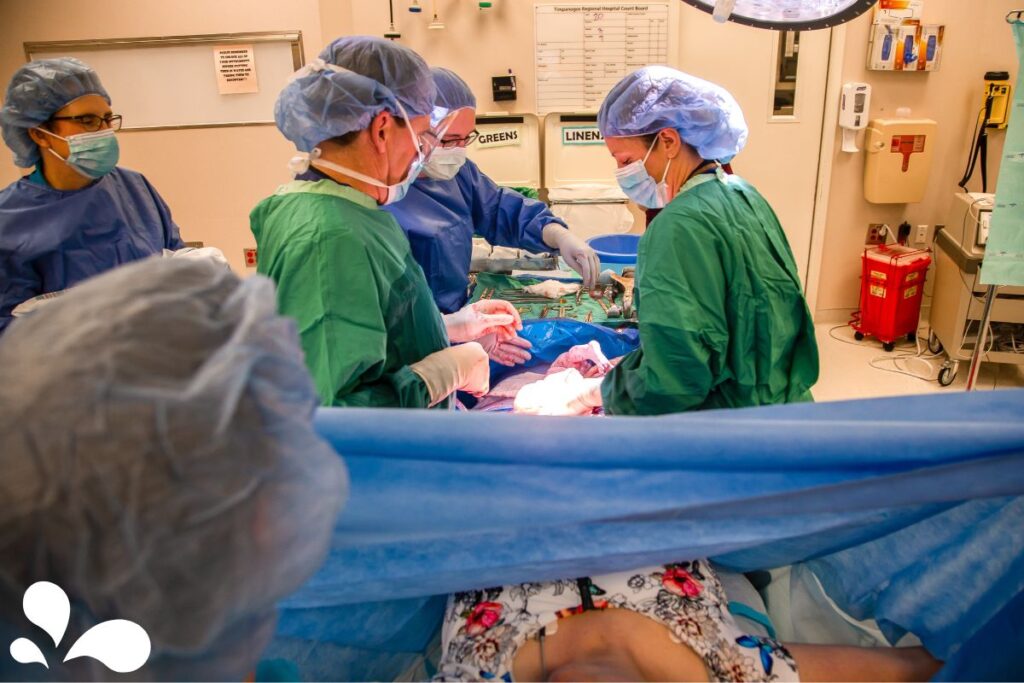
How long are you asleep under general anesthesia for a C-section?
If general anesthesia is used, which is less common than spinal or epidural anesthesia, you’ll be asleep for the duration of the surgery, typically around 45 minutes to an hour. You’ll remain in recovery for additional monitoring until you wake up and the anesthesia wears off.
What’s the best way to sleep after a C-section?
Finding a comfortable sleeping position post-C-section can be challenging.
Here are some tips:
- Back sleeping: Use pillows to prop up your upper body slightly.
- Side sleeping: Place a pillow between your knees for support.
- Avoid stomach sleeping: This can put pressure on your incision and be uncomfortable.
Post-op C-section care
The better you take care of yourself, the smoother your recovery will likely be.
Here are some things you should do to help your body heal after a C-section:
- Manage pain: Take prescribed pain medications as directed.
- Rest: Get plenty of rest and avoid strenuous activities.
- Incision care: Keep the incision site clean and dry, and follow your healthcare provider’s instructions for care.
- Monitor for complications: Watch for signs of infection, such as redness, swelling, or fever, and contact your healthcare provider if you have concerns.
- Gradual activity: Slowly increase your activity level as you feel able, but avoid heavy lifting and intense exercise for at least 6 weeks.
Read more C-Section Recovery Tips.
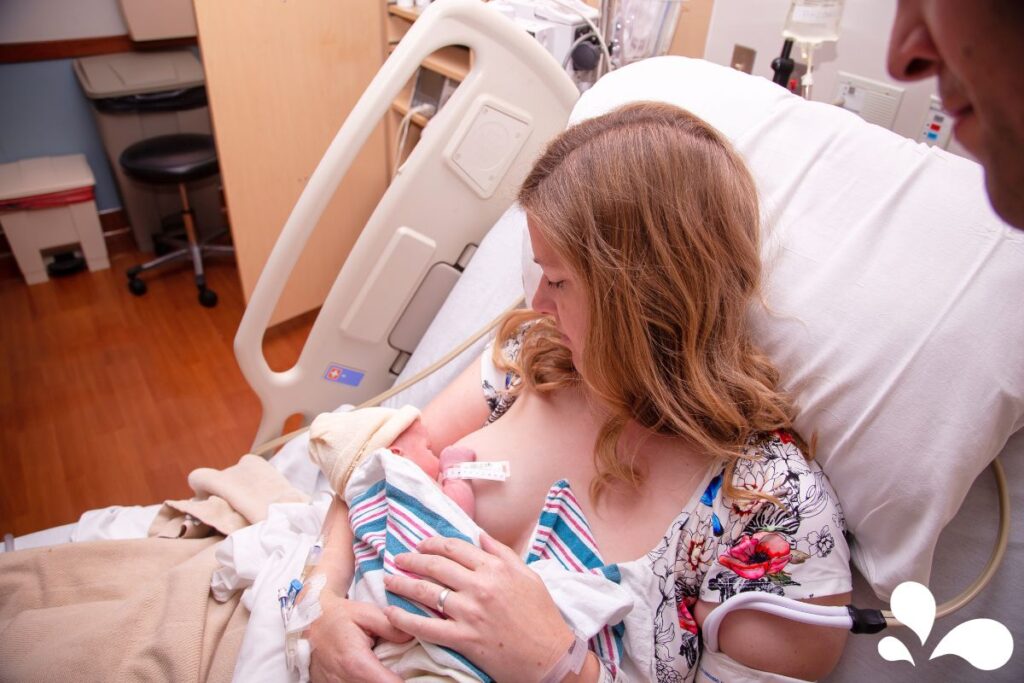
Additional tips for breastfeeding success after a C-section
- Prepare for breastfeeding: Educate yourself on breastfeeding by reading multiple reputable sources, taking breastfeeding classes (either online or in-person), and understanding the impact of both vaginal and C-section deliveries on breast milk production. For comprehensive preparation, you can refer to their guide titled 6 Ways to Prepare for Breastfeeding Before Having Your Baby.
- Don’t skip the “golden hour”: Ensure immediate skin-to-skin contact with your baby after birth, known as the “Golden Hour,” which is crucial for promoting bonding and milk supply. If initial contact is delayed, start it as soon as possible. This helps reduce stress and stabilize vitals for both mama and baby. Additional insights can be found in their post about The Golden Hour.
- Breastfeed early and often: Since C-section medications might make the baby sleepy, it is crucial to breastfeed frequently, every 2-3 hours, to stimulate milk production. Wake the baby to feed if they sleep longer, especially during the first two weeks.
- Try different positions: Due to discomfort in the abdominal area following a C-section, experimenting with various breastfeeding positions is advisable. The football hold is recommended to avoid pressure on the abdomen. For a detailed guide on breastfeeding positions, you can check their post The Most Common Breastfeeding Positions.
- Support is key: Surround yourself with supportive individuals who support your decision to breastfeed. Communicate your goals with your partner, family, friends, and healthcare providers. For additional support, consider having an International Board Certified Lactation Consultant (IBCLC) ready to assist post-birth. For more ways partners can support breastfeeding, refer to their article 10 Ways for Partners to Support Breastfeeding.
Find more tips to success by reading Breastfeeding Success After a Cesarean Delivery.



